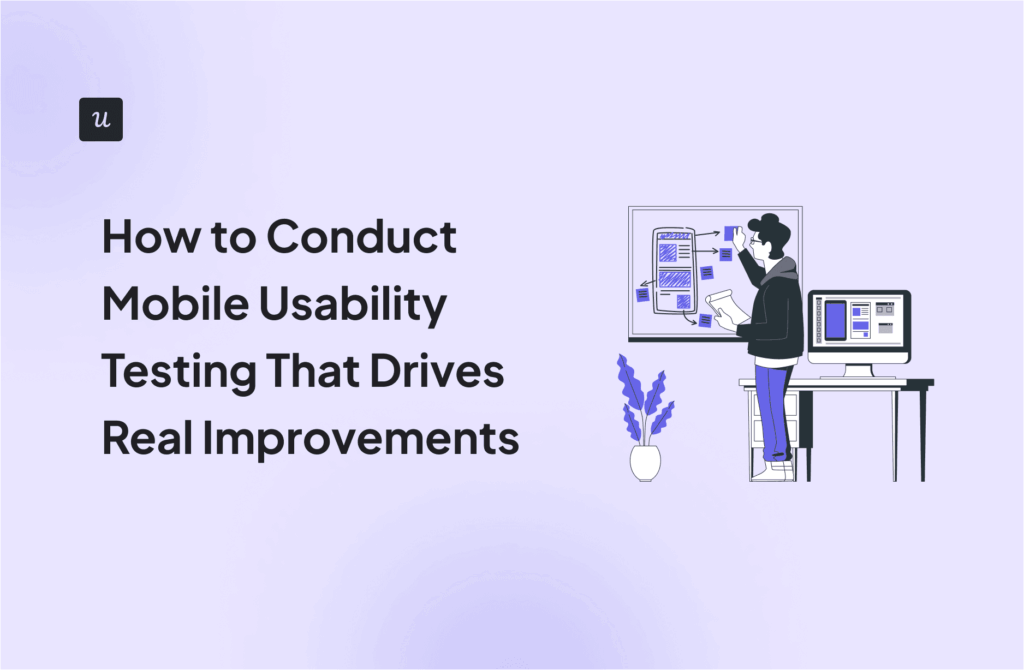
Product Differentiation in SaaS: How to Make a Difference as a Product Manager
What’s product differentiation? What are its benefits? What differentiation strategies can a product manager use to make the product stand out in a saturated market?
These are just some of the questions we’re answering in the article! If you’d like to learn more, grab a beverage of your choice, find a comfy seat, and let’s jump in!
Get The Insights!
The fastest way to learn about Product Growth, Management & Trends.
What is product differentiation?
Product differentiation is a marketing strategy that is designed to identify and showcase the unique features of your product and make it stand out from competitors.
If you are working for a company with a number of similar products, product differentiation is necessary to highlight the differences between them to avoid product cannibalization.
Advantages of product differentiation
Companies can benefit from product differentiation in a few ways.
You will see that some of the advantages overlap with those of product positioning. There’s no surprise here because the two are closely linked and successful positioning isn’t possible without good differentiation.

Better customer product fit
If your product differentiation is data-driven and user-centered, it enables you to achieve better customer fit and attract the right customers.
What do we mean by ‘right customers’?
In short, it’s those that get the most value from the product. And that naturally translates into more value for your business.
The more you know about your customer base, the better you can identify the most profitable niche for your product. This almost always gives greater ROI than trying to build a product that would satisfy the needs of the general public.
Helps build brand loyalty
As you deliver more value than other businesses in the same industry, product differentiation also helps you build a loyal customer base and boost user retention.
If you regularly put in the effort to listen to your existing and potential customers, identify their needs and manage to meet them better than your rivals, they will not only stay with you but may become true fans of your organization.
Customer loyalty and higher retention rates translate into lower overheads because it’s cheaper to retain customers than acquire new ones.
What’s more, good differentiation campaigns make a memorable impression on the prospective customer. They help to create a link between your brand and the benefits that your product delivers.
Explore how you can improve the retention in your mobile app with Userpilot’s brand new mobile features.
Higher perceived quality – higher price point
For some businesses or sectors, the only way to differentiate a product is by lowering the prices.
However, in SaaS, if you play your cards well, you may be able to charge more for your product.
To do that, you need to use your market research results to identify the characteristics that your customers are ready to pay a premium price for.
More often than not, it is a combination of the features and qualities that are available at different pricing tiers that enables you to maximize profit. Refining your pricing model to achieve that will probably take a fair bit of experimentation but it’s totally worth it.
Types of product differentiation strategy
We classify differentiation strategies into three main groups. This depends on the kinds of factors they rely on to make your product come across as unique.
Vertical differentiation strategy
Vertical product differentiation is based on objective characteristics, like the price, features, or being able to use the product across different platforms or devices.
It is easy for a user to rank products using such criteria. However, their final choice will depend on how much value they attribute to specific characteristics.
For example, for one user, being able to use their app subscription on 3 different devices may be the key feature. On the other hand, another one may choose to buy a competing product that doesn’t offer this option but is cheaper.
Horizontal differentiation strategy
The horizontal product differentiation strategy is based on subjective criteria.
If two products offer the same functionality and the same price, it may be the subjective impression that the customer gets from interacting with the product that will sway them towards one of them.
Mixed differentiation strategy: vertical and horizontal differentiation
Mixed differentiation strategies are a hybrid of horizontal and vertical differentiation.
The truth is that many customers make their decision based on a combination of factors, not just one of them.
If you’re after a computer, you will most likely look at two factors: the specs that will allow you to run the software you need and the price.
However, you may also consider how it goes with the interior design of your home office.
Who is responsible for building a competitive advantage with product differentiation?
It is a common misconception that product differentiation is the responsibility of the marketing team. While they may be in charge of the overall differentiation strategy, their expertise is limited and this can result in missed opportunities.
Involving the customer support and success, sales, and engineering team representatives is essential.
As we will see in the next section, each of these teams can come up with differentiation factors that the marketing team alone wouldn’t be able to.
What are the factors that differentiate products in a competitive market
Let’s now explore the aspects around which you can build your product differentiation strategy.
Product differentiation through quality
Quality is one of the most obvious ways to differentiate your product from competitors.
In short, to gain a competitive advantage, you need to showcase the superior quality and reliability of your product to potential and existing customers.
Making the right impression is just the beginning though.
Your team needs to be on the constant lookout for opportunities to improve your product quality.
Collecting feedback, both actively and passively is an essential part of it. You use the customer input, develop the product, implement the change, and test its effectiveness by collecting more feedback and tracking usage.
Apart from feedback from surveys and interviews, look at online reviews and social media comments.

Vertical differentiation through pricing strategy
Pricing is another factor that you can adjust to make your product stand out from the crowd.
The easiest way to do it is by making your product cheaper than your competitors.
Sometimes, however, increasing the prices or charging for what others give for free could be exactly what you need.
For example, charging for the trial period, as SurferSEO used to, can increase the perceived value of your product.

Another example could be offering only annual subscriptions, and not monthly ones, to attract more established customers with the right budgets.
Differentiation strategy through service provided
More and more SaaS businesses recognize the value of customer-led and product-led growth and prioritize it over the sales-led approach.
To facilitate product-led growth, you need to provide users with the opportunity to experiment with the product and discover its value.
Free trials or freemium models give new customers access to the product, but whether they discover the value soon enough to turn into paying customers depends on the level of support they receive.
And that’s your chance to shine and differentiate your product from its competitors!
One way to achieve that is through product-led onboarding.
Skillful use of in-app experiences like interactive walkthroughs or checklists will guide your users through the activation funnel and will drive adoption.

More and more often, users don’t have the time to wait for a reply from customer support. That’s why being able to access the information they need in an in-app resource center can immensely improve user experience and distinguish your product from its rivals.

Successful product differentiation strategy based on features
This strategy may seem fairly straightforward. You just provide more features that your rivals don’t have to wow the customers, and your job is done, right?
Not quite.
The trick is to give your users only the features that they genuinely need to meet their objectives and not every feature they ask for. It’s about understanding the functionality they are looking for and delivering the features that provide value and align with your product vision and values.
If you want to build killer features that deliver exceptional value for your customers and avoid falling into the feature fallacy trap, make sure you identify user needs before you commit to their development.

Always use prototyping or fake door tests to validate your ideas. Otherwise, you may waste a lot of time and money building stuff that nobody needs.
Don’t let initial positive feedback mislead you though.
Features often benefit from the novelty factor but when the initial excitement wears off, their usage drops to zero. That’s why it’s essential to keep tracking the feature usage and sunset them if necessary.
Product differentiation through customization
Customization is another factor that you can use to differentiate your product.
For many corporate clients, the ability to customize the product functionality or interface to their needs or branding may be what will set you apart from your rivals.
For example, the project management platform ClickUp allows its users to customize their dashboard UI by adding and removing elements, depending on the kind of project they are working on.

Differentiation strategy using product design
Good product design is another characteristic that you can use to establish your product as a unique offering on the market.
Ensuring great product accessibility and usability is the start.
That means designing a product that is easier to use, allowing customers to achieve their objectives more quickly and efficiently than competitors, and accommodating the unique needs of all user segments.
That’s what Asana nailed when it modified its color scheme to make it more accessible to users with impaired vision.

Showing such empathy for your users’ unique needs definitely allows them to achieve their objectives more easily. More importantly, it creates UX that evokes positive emotions, makes memorable impressions, and in the long run – increases loyalty to your brand.
How to start with product differentiation
The key to successful product differentiation is knowing your target market. That’s why the first step is conducting comprehensive market research.
Next, use the expertise of other teams in your organization to identify all the possible ways in which you can differentiate your product.
Finally, once you have an idea of what you can build your differentiation strategy around, look at your product roadmap and see how they fit into it.
Conclusion
A solid product differentiation strategy can bring very tangible benefits to your company. It can increase your brand loyalty, help you achieve better customer fit, and allow you to sell your product at a higher price point, so it’s definitely worth your time and energy.
If you would like to see how Userpilot can help you develop your differentiation plan and make your product stand out, book a demo!







